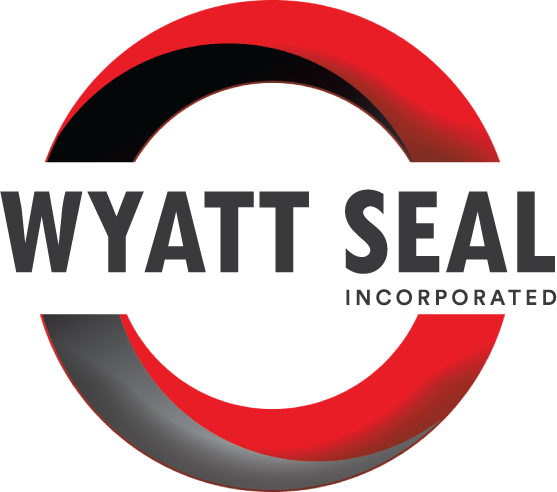Need some assistance?
- Overview
-
By Type
Custom - Standard (AS568)
-
By Brand
Parker - Freudenberg
-
By Material
Nitrile - FKM
- EPDM
- FFKM
- Silicone
- Fluorosilicone
- PTFE
- Polyurethane
- FEP/PFA Encapsulated
- HNBR
- Overview
-
By Type
U-Cups - Wipers
- Wear Rings
- Overview
-
By Brand
Simmerring®
Need some assistance?
Need some assistance?
-
O-RINGS
- Overview
-
By Type
Custom - Standard (AS568)
-
By Brand
Parker - Freudenberg
-
By Material
Nitrile - FKM
- EPDM
- FFKM
- Silicone
- Fluorosilicone
- PTFE
- Polyurethane
- FEP/PFA Encapsulated
- HNBR
-
HYDRAULICS & PNEUMATICS
- Overview
-
By Type
U-Cups - Wipers
- Wear Rings
-
ROTARY SEALS
- Overview
-
By Brand
Simmerring®
- CUSTOM MOLDED
- GASKETS
- MACHINED RUBBER & PLASTICS
- EXTRUDED SHAPES & PROFILES
- SPECIALTY PRODUCTS
FEP/PFA Encapsulated O-rings
FEP/PFA encapsulated O-rings combine the chemical resistance and low-friction properties of PTFE (polytetrafluoroethylene) with the elasticity of a rubber core, typically made from silicone, FKM, or EPDM. This unique construction allows them to deliver reliable sealing performance in aggressive environments where standard elastomers would fail. The FEP/PFA outer jacket provides outstanding resistance to chemicals, extreme temperatures, and corrosive media, while the flexible core ensures a tight, resilient seal under pressure.
Encapsulated O-rings are widely used in industries such as chemical processing, pharmaceuticals, food and beverage, and electronics manufacturing—applications where purity, durability, and resistance to harsh operating conditions are essential. Their non-stick surface, low wear rate, and broad chemical compatibility make them an ideal choice for both static and dynamic sealing in demanding environments.
Features and Specifications
Temperature Range
FEP/PFA encapsulated O-rings typically operate within a broad temperature range of approximately -76 °F (-60 °C) up to 500 °F (260 °C), making them suitable for extreme heat. Their fluoropolymer jackets provide excellent thermal stability, maintaining performance where many other materials would degrade.
Durometer
The elastomeric cores inside FEP/PFA encapsulated O-rings generally have a durometer range from 60 Shore A to 90 Shore A, offering a balance of flexibility, compression set resistance, and sealing force. The fluoropolymer encapsulation ensures low friction and chemical resistance, while the core provides the necessary elasticity for reliable sealing.
Color
FEP/PFA encapsulated O-rings are usually white or translucent due to the nature of the fluoropolymer jackets. When the jacket is translucent, the color of the elastomeric core can often be seen through the shell, allowing for easy identification of material type. Custom colors can also be produced to meet specific application or identification requirements.
Benefits of FEP/PFA Encapsulated O-rings
Encapsulated O-rings are highly valued for combining the mechanical strength and flexibility of an elastomer core with the exceptional chemical and thermal resistance of a protective fluoropolymer jacket. This unique construction makes them a reliable choice for demanding sealing applications across industries such as chemical processing, pharmaceuticals, food and beverage, and electronics manufacturing. Known for their durability, abrasion resistance, and ability to maintain flexibility under pressure, encapsulated O-rings deliver consistent, long-lasting, leak-free performance even in harsh and high-cycle environments. They offer several key mechanical and chemical advantages, including:
- Chemical resistance
- Flexibility
- Low compression set
- Low friction
- Nonstick
- Non-toxic / sterile (important for food, pharma, and medical applications)
- Resistance to aging and sunlight
- Resistance to water and steam
- Temperature resistance
- Tensile strength and tear resistance
Additionally, encapsulated O-rings are resistant to:
- Abrasions
- Acids
- Cleaning agents
- Corrosion
- Diluted alkalis
- Grease
- Mold
- Oxidation
- Silicone oils
- Sunlight
- Water
- Weather
Common Uses and Applications of FEP/PFA Encapsulated O-rings
Encapsulated O-rings combine the flexibility of elastomer cores with the chemical toughness of fluoropolymer coatings, creating seals that stand up to some of the harshest environments. Their unique design offers superior protection against aggressive chemicals, extreme temperatures, and wear, making them a go-to solution for applications where both durability and reliability are crucial. These seals perform exceptionally well in both static and dynamic conditions and can be tailored to meet specific sealing requirements. You'll find them playing vital roles across industries such as pharmaceuticals, chemical processing, food and beverage, and electronics manufacturing. Common uses include sealing pumps, valves, mixers, and other essential process equipment.
- Food and beverage
- Hydraulics
- Marine devices
- Medical and pharmaceutical devices
- Oil and gas
- Semiconductors
The wyatt seal advantage
We're here to help in selecting the right sealing solution. Tell us your specifications, and we'll partner with you to find the ideal O-rings for your next project. Contact Wyatt Seal to find out more about our O-ring selection and custom solutions.

